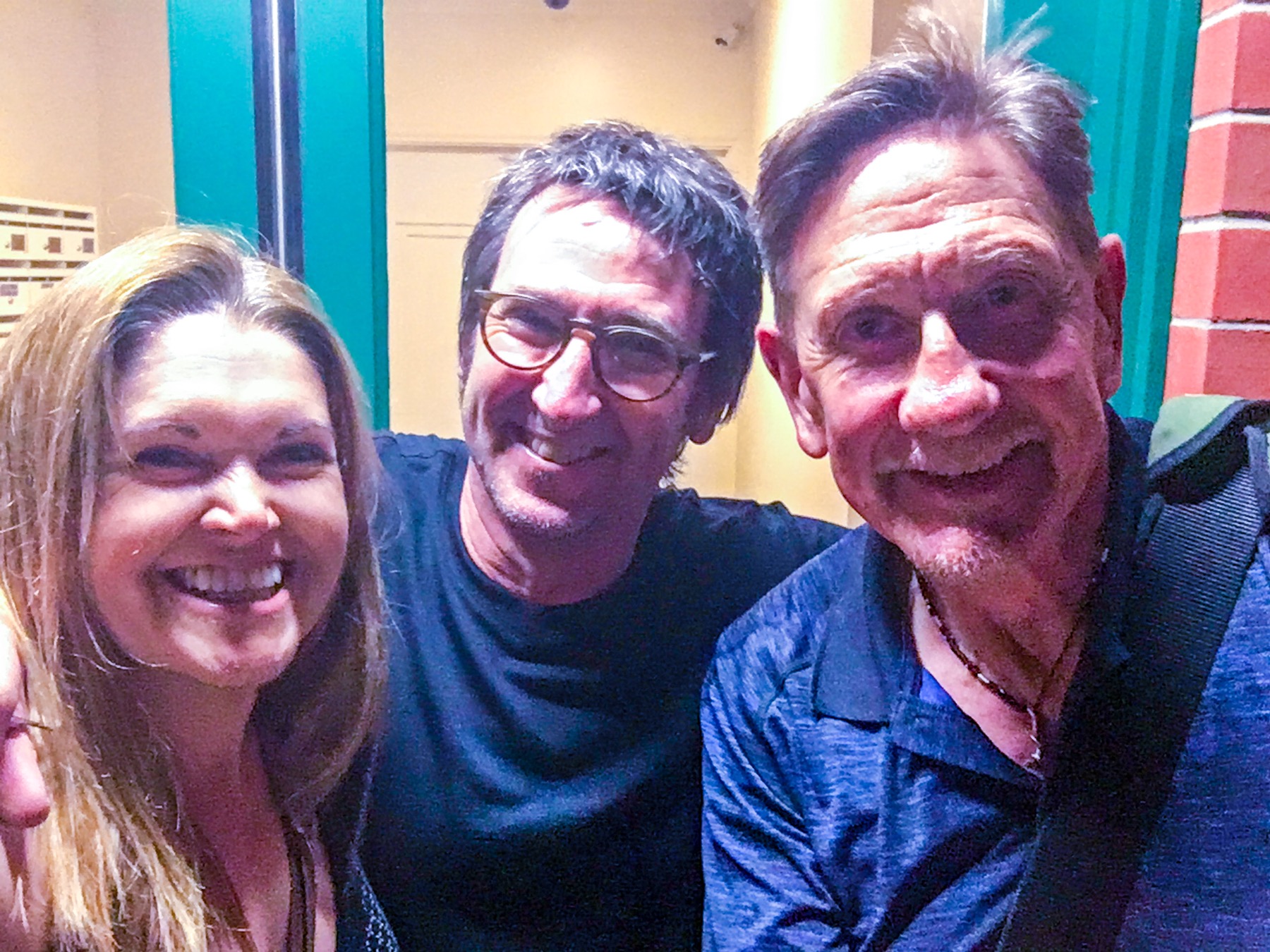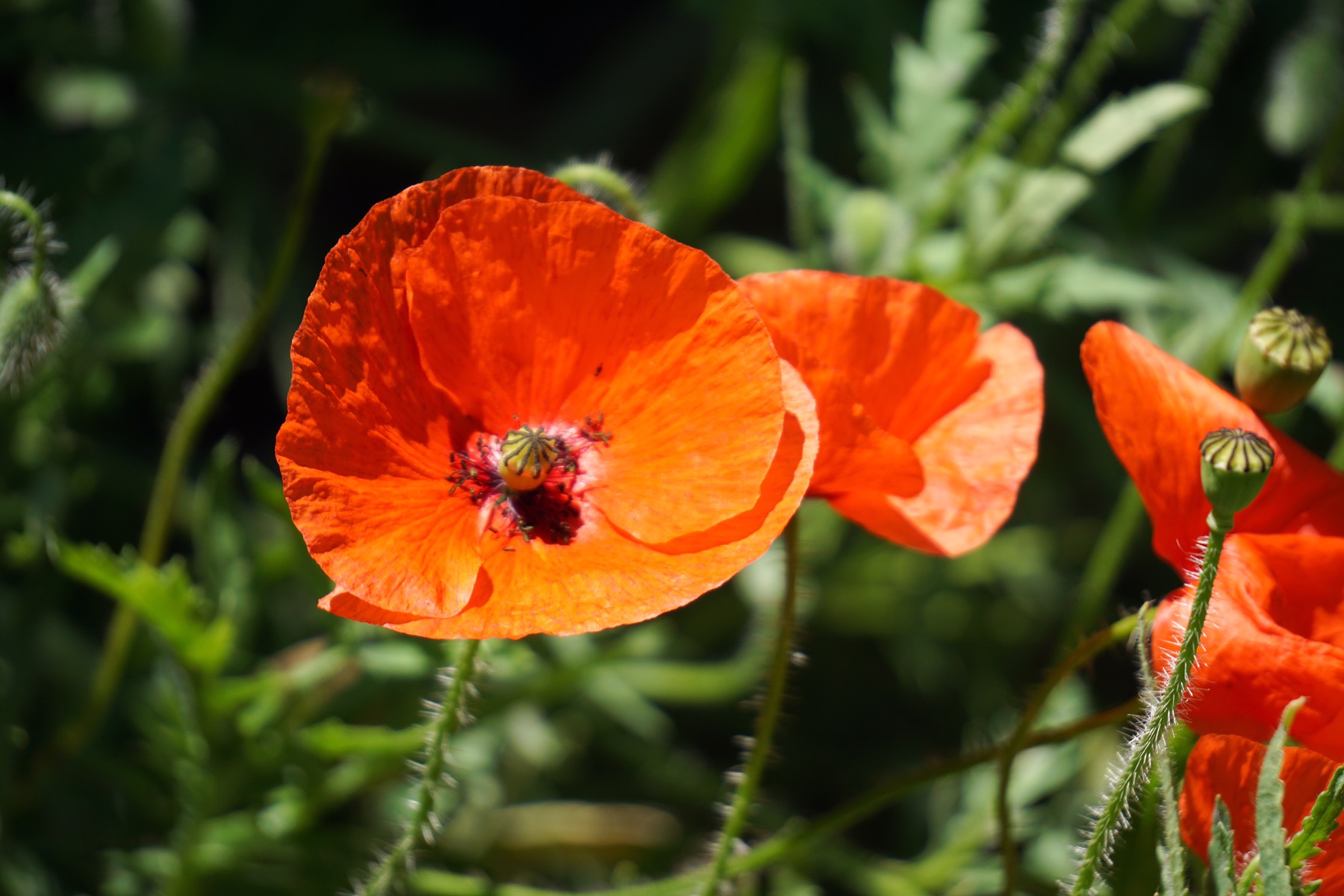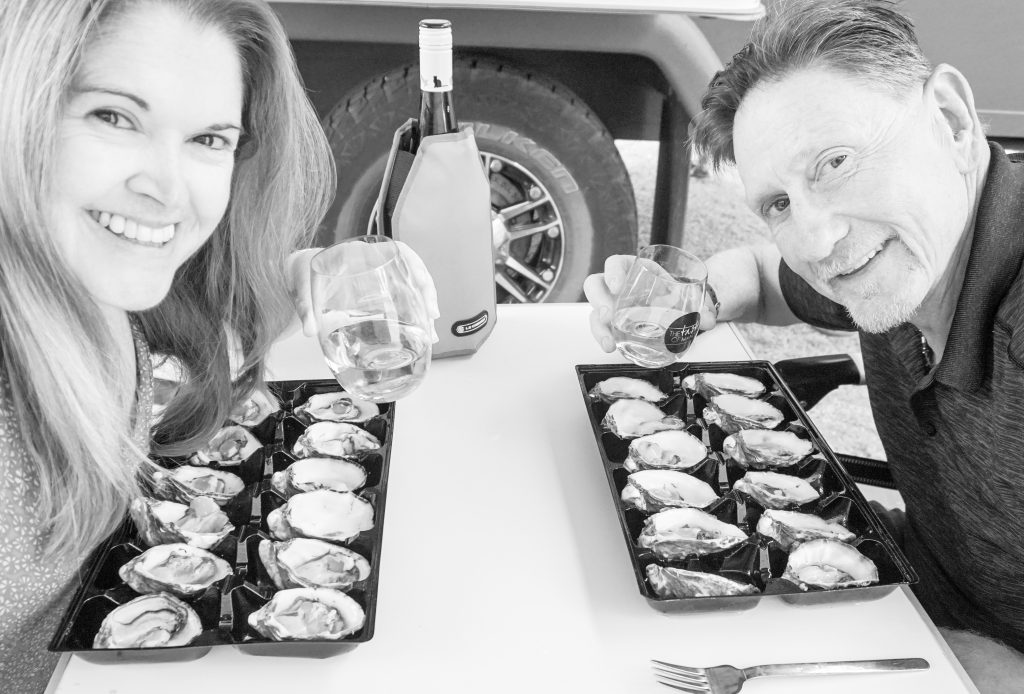Author: Mrs A
Location: Lobethal, Adelaide Hills
Distance walked: 7km
In total contrast to yesterday, this morning dawned cold and grey, temperatures struggling to top 17 degrees C. It was very hard to be motivated to do anything. Nevertheless, we forced ourselves out of bed and joined the Moylans for a fine breakfast of bacon and egg in a hole, mushrooms and tomatoes, and to Mr A’s delight, accompanied by chunks of black pudding, all cooked on the BBQ out on the deck. This is a household after our own hearts – it really feels like home!
Mr A and I tried to make plans for the coming few weeks to guide us back to Sydney, but are struggling with the weather forecast – up to 37 degrees in one of the locations we were planning to bush camp in – we can’t believe how temperatures in South Australia can vary by 20 degrees in a matter of a few days!
While Ali, Andy and the boys disappeared off to a Christmas party in a nearby town, we decided we ought to get some fresh air and set off on a walk with the dogs. Harry and Harvey were very well behaved and enjoyed substantial time sniffing lamp posts, bins and bushes along the way. We had just arrived back at the caravan when the party goers arrived back from their celebrations, the boys extremely happy with their ‘football on a string’ gifts from Santa. What a relief they both got the same gift! It wasn’t much later that the invitation went out to join Ali and Andy for espresso martinis…and so Sunday night began.
We had just arrived back at the caravan when the party goers arrived back from their celebrations, the boys extremely happy with their ‘football on a string’ gifts from Santa. What a relief they both got the same gift! It wasn’t much later that the invitation went out to join Ali and Andy for espresso martinis…and so Sunday night began.
 Ali works as marketing manager at ‘Something Wild’, and their Australian Green Ant Gin is just the first of their products we were to be tasting this evening. I am suspecting most people have never tasted a green ant before. I have, while I was in the Northern Territory backpacking – we were invited to try a taste of this bright green delicacy as they trailed they way along tree branches. The idea is to bite them before they bite you back – they have a taste of lime with a hint of coriander and were a favourite of the local Aboriginal populations. It works well in gin!
Ali works as marketing manager at ‘Something Wild’, and their Australian Green Ant Gin is just the first of their products we were to be tasting this evening. I am suspecting most people have never tasted a green ant before. I have, while I was in the Northern Territory backpacking – we were invited to try a taste of this bright green delicacy as they trailed they way along tree branches. The idea is to bite them before they bite you back – they have a taste of lime with a hint of coriander and were a favourite of the local Aboriginal populations. It works well in gin!
Something Wild works closely with Aboriginal populations to bring various high quality meats, game and a range of Indigenous food to top chefs, restaurants and the discerning local public. Ali’s freezer is positively bursting with goodies from her workplace, and we were quite excited about the evening’s upcoming culinary delights.
First of all, another guest arrived, family friend Robert Johnson. Mr A was quite excited to be in the presence of a blues legend, and only slightly less excited to find out he didn’t play blues but does make a rather fine drop of Eden Valley wine. He brought along a bottle of his straight Viognier and a Merlot (sells for $24 a glass at the Sydney Opera House apparently). Delicious.
Dinner was some dry aged English longhorn steaks, expertly cooked by Andy on the BBQ and accompanied by vegetables. We felt very spoilt. It was a great evening with great company and many laughs had. We will definitely be back here one day!


 We saw dolphins fishing in the shallows and a lot of coastal birdlife flitting around the dunes. There was not a breath of wind – the water on St Vincent Gulf was like a lake.
We saw dolphins fishing in the shallows and a lot of coastal birdlife flitting around the dunes. There was not a breath of wind – the water on St Vincent Gulf was like a lake. As much as we enjoyed cycling the hills of the Coromandel Valley, it was exhilarating to whizz along on the flat pathways, giving a chance to look around and chat as we travelled. We reached the boat ramp to the dolphin sanctuary and watched a couple of kayakers launching for an explore before returning to camp.
As much as we enjoyed cycling the hills of the Coromandel Valley, it was exhilarating to whizz along on the flat pathways, giving a chance to look around and chat as we travelled. We reached the boat ramp to the dolphin sanctuary and watched a couple of kayakers launching for an explore before returning to camp. We’re getting fairly packed up this evening in preparation for moving on tomorrow morning to our next region, friends and more wine in the Adelaide Hills! Tonight will be vegetarian and alcohol free…
We’re getting fairly packed up this evening in preparation for moving on tomorrow morning to our next region, friends and more wine in the Adelaide Hills! Tonight will be vegetarian and alcohol free…
 He begins to make a slow descent….
He begins to make a slow descent…. All that work deserves a break, so it’s time for another rest and stretch out those hand muscles…
All that work deserves a break, so it’s time for another rest and stretch out those hand muscles… Finally down to the bottom of that branch, another rest before making the rest of the journey to see the other male off…
Finally down to the bottom of that branch, another rest before making the rest of the journey to see the other male off… About 20 minutes after this photo was taken we once again heard the donkey-pig sounds in the valley – he’d made the final climb down and made it to a new tree to do some grunting from!
About 20 minutes after this photo was taken we once again heard the donkey-pig sounds in the valley – he’d made the final climb down and made it to a new tree to do some grunting from! A surprise visitor arrived at the end of the evening, their son Mike over from the Margaret River for a wine judging course. It was the first time we had met Mike in person (see him in Cathy’s photos on Facebook occasionally) – though we talked about him and his wife Virginia a lot in the Margaret River!
A surprise visitor arrived at the end of the evening, their son Mike over from the Margaret River for a wine judging course. It was the first time we had met Mike in person (see him in Cathy’s photos on Facebook occasionally) – though we talked about him and his wife Virginia a lot in the Margaret River!

 Mr A and I volunteered to pop down to the shops to buy a few supplies for tonight’s and tomorrow’s dinner, and Kim pointed us in the direction of her favourite supermarket. OMG. What initially was meant to be purchasing some fish, chicken thighs and a lime turned in to an almost $300 shop!!
Mr A and I volunteered to pop down to the shops to buy a few supplies for tonight’s and tomorrow’s dinner, and Kim pointed us in the direction of her favourite supermarket. OMG. What initially was meant to be purchasing some fish, chicken thighs and a lime turned in to an almost $300 shop!! There is a breadbar instead of a bakery, with all sorts of goodies on sale – Mr A was like a kid in a sweet shop!He emerged with a caramel donut – to share with Kim over a cup of tea when we got back!
There is a breadbar instead of a bakery, with all sorts of goodies on sale – Mr A was like a kid in a sweet shop!He emerged with a caramel donut – to share with Kim over a cup of tea when we got back!

 The Cheese was from all around Australia and the world – Mr A collected some washed rind sheep cheese from France and a bitey Stilton from England…after our journey through small town Australia, this was paradise.
The Cheese was from all around Australia and the world – Mr A collected some washed rind sheep cheese from France and a bitey Stilton from England…after our journey through small town Australia, this was paradise. Kim and Mike’s garden is also a haven for birdlife, with parladotes nesting on their patio, honeyeaters in the bottlebrush flowers, and pink and grey galahs looking down on us. Just a little paradise.
Kim and Mike’s garden is also a haven for birdlife, with parladotes nesting on their patio, honeyeaters in the bottlebrush flowers, and pink and grey galahs looking down on us. Just a little paradise.

 Our day concluded with a fabulously decadent evening of oysters, followed by a delicious Thai green chicken curry and dessert – Mr A delighted to find Kim had baked a fresh lemon meringue pie, and me perfectly happy with the final scoop of my dairy-free ice cream from Bunbury in Western Australia, along with a selection of fresh berries from the garden. Oh and I almost forgot the wines – an excellent selection from our tastings in the Margaret River region…Fabulous!
Our day concluded with a fabulously decadent evening of oysters, followed by a delicious Thai green chicken curry and dessert – Mr A delighted to find Kim had baked a fresh lemon meringue pie, and me perfectly happy with the final scoop of my dairy-free ice cream from Bunbury in Western Australia, along with a selection of fresh berries from the garden. Oh and I almost forgot the wines – an excellent selection from our tastings in the Margaret River region…Fabulous! Our first stop, Sevenhill Cellars, was in fact the first vineyard in the area in 1851, set up by the Catholic Church to provide wine for holy communion. Other vines followed but it wasn’t until the 1950s that Riesling was finally planted here – the grape the area has built its reputation on.
Our first stop, Sevenhill Cellars, was in fact the first vineyard in the area in 1851, set up by the Catholic Church to provide wine for holy communion. Other vines followed but it wasn’t until the 1950s that Riesling was finally planted here – the grape the area has built its reputation on. We continued on, the trail gradually going uphill most of the way (but nowhere as steep as yesterday!), before reaching a peak and heading downhill towards Watervale. There we turned off the path and headed to Crabtree Wines for a tasting. What a fabulous selection of wine and a great tasting experience in amazing scenery.
We continued on, the trail gradually going uphill most of the way (but nowhere as steep as yesterday!), before reaching a peak and heading downhill towards Watervale. There we turned off the path and headed to Crabtree Wines for a tasting. What a fabulous selection of wine and a great tasting experience in amazing scenery. We had lunch in Watervale before turning back to camp, enjoying the downhills when they came.
We had lunch in Watervale before turning back to camp, enjoying the downhills when they came.


























 I lost track of how long I was under water this time, but was ready for a hot shower by the time I climbed back out on to the boat. What a fantastic view of some incredible creatures. Apparently they have very poor eyesight and their only way of testing their food is with their teeth. They don’t actually eat humans once they have attacked. We are much too bony. They far prefer the fat and blubber of a seal.
I lost track of how long I was under water this time, but was ready for a hot shower by the time I climbed back out on to the boat. What a fantastic view of some incredible creatures. Apparently they have very poor eyesight and their only way of testing their food is with their teeth. They don’t actually eat humans once they have attacked. We are much too bony. They far prefer the fat and blubber of a seal.















